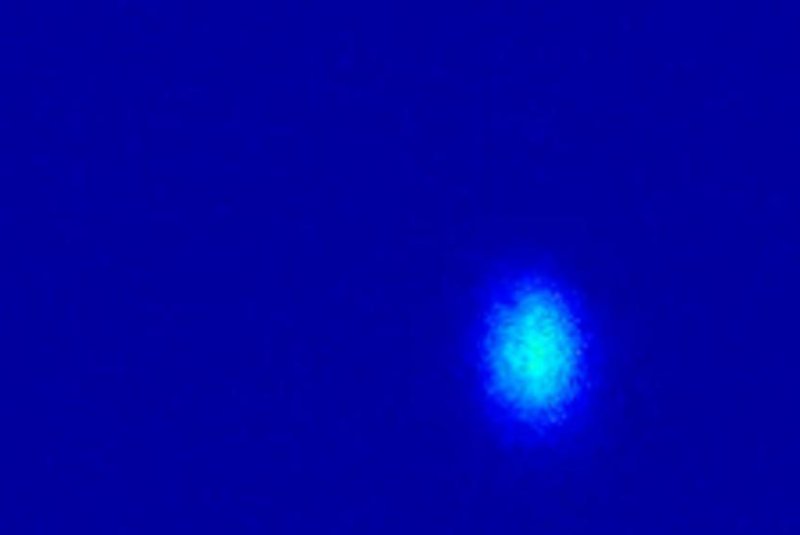The first laser light generated by European XFEL, as seen at the end of the 2-mile-long tunnel. Photo by DESY
May 4 (UPI) -- The world's largest X-ray laser won't begin conducting research until September, but the European XFE has reached its last major milestone before it comes online. This week, the laser created its first beam of laser light.
The initial beam featured a wavelength of 0.8 nanometers. The laser produced a pulse per second. Once the European XFE is running at full capacity, the laser will generate 27,000 pulses per second.
"This is an important moment that our partners and we have worked towards for many years," Robert Feidenhans'l, managing director of the European XFEL, said in a news release. "The European XFEL has generated its first X-ray laser light. The facility, to which many countries around the world contributed know-how and components, has passed its first big test with flying colors."
The underground laser facility, featuring an accelerator and a series of tunnels and mirrors, stretches more than two miles in length. Scientists will be able to generate a range of unique laser flashes for a variety of research purposes.
"The first laser light produced today with the most advanced and most powerful linear accelerator in the world marks the beginning a new era of research in Europe," said Helmut Dosch, board chairman at DESY. "The European XFEL will provide us with the most detailed images of the molecular structure of new materials and drugs and novel live recordings of biochemical reactions."
After the streams of electrons are produced by the accelerator, magnets with alternating poles, called undulators, drive the beams through a lengthy series of mirrored tunnels. At each turn, the beams release X-ray radiation which magnify over the course of each beam's trip through the "slalom course."
Once in operation the superconducting linear accelerator will generate the fastest, most powerful laser pulses on the planet. The laser facility will also be extremely versatile, capable of conducting biological, chemical and physical experiments.
Among other research efforts, the laser will be used to catalyze chemical processes, study biochemical processors and measure molecules structures.















